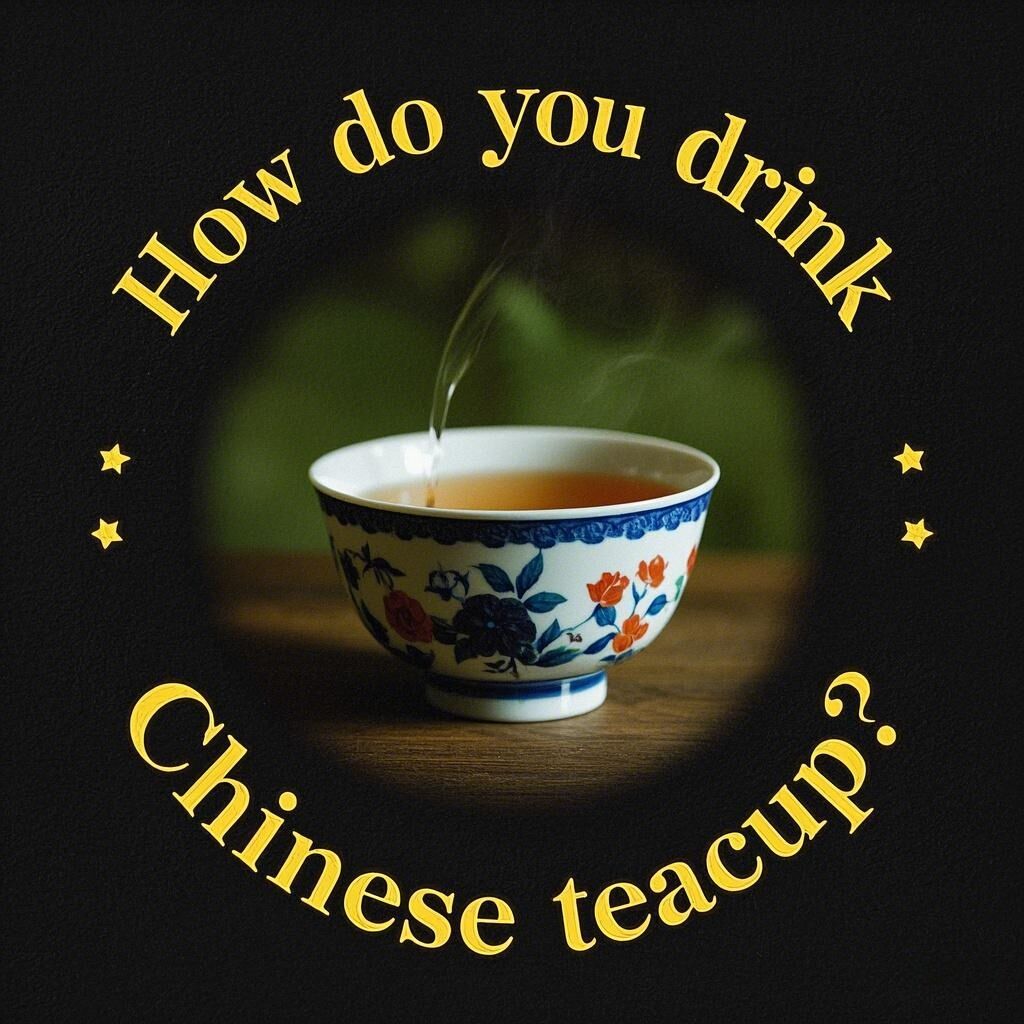What Material is Chinese Tea Cup? The Prominence of Ceramic
In the rich tapestry of Chinese tea culture, the choice of material for a tea cup is far from trivial. It significantly impacts the overall tea - drinking experience, and among all materials, ceramic holds a position of unparalleled importance.
The Inseparable Bond of Chinese Tea and Ceramic
The relationship between Chinese tea and ceramic dates back thousands of years. Ceramic tea cups have been an essential part of Chinese tea ceremonies since time immemorial. As early as the Neolithic Age, primitive ceramic vessels were used in the context of tea - related activities. This long - standing connection has only deepened over the dynasties.
During the Tang Dynasty, tea culture underwent a remarkable flourishing period. Earthenware tea cups, with their earthy charm and affordability, were extremely popular. Their porous nature allowed for a certain interaction with the tea, enhancing the flavor in a unique way. This was in line with the tea - brewing methods of the time, which often emphasized a more rustic and natural tea - tasting experience.
The Song Dynasty witnessed a revolutionary change in ceramic technology as it pertained to tea cups. Porcelain, a more refined and sophisticated form of ceramic, took center stage. Made primarily from kaolin clay, porcelain tea cups were fired at extremely high temperatures, resulting in a hard, dense, and often translucent material. The smooth surface of porcelain not only did not absorb the flavor of the tea but also had the ability to showcase the color of the tea liquor in all its glory. This made porcelain the material of choice for the discerning tea connoisseurs of the Song Dynasty. The development of unique glazing techniques during this period further added to the aesthetic allure of porcelain tea cups.
Raw Materials and Manufacturing Process of Chinese Ceramic Tea Cups
Raw Materials
The main raw material for Chinese ceramic tea cups is, of course, clay. There are different types of clay used, each with its own characteristics. Kaolin clay, as mentioned before, is the key ingredient for porcelain. Its purity and fine - grained texture contribute to the high - quality finish of porcelain. Earthenware, on the other hand, is made from common clay that is more widely available. This clay contains a higher amount of impurities, which gives earthenware its characteristic porous and somewhat rough texture. Stoneware is crafted from a type of clay with fewer impurities than earthenware, providing it with greater durability.
In addition to clay, other materials are often added to the ceramic mixture. For example, feldspar is commonly used. Feldspar acts as a flux, reducing the melting point of the clay during the firing process. This not only makes the manufacturing process more efficient but also affects the final properties of the ceramic, such as its hardness and gloss.
Manufacturing Process
The manufacturing process of Chinese ceramic tea cups is a complex and meticulous one. It begins with the preparation of the raw materials. The clay is carefully selected, cleaned, and mixed with other additives as required. It is then shaped into the desired form, which can be done through various methods such as hand - throwing on a potter's wheel, molding, or slip - casting.
After shaping, the tea cup undergoes a drying process to remove excess moisture. Once dry, it is fired in a kiln. The firing temperature varies depending on the type of ceramic. Earthenware is fired at relatively low temperatures, around 1000 - 1100°C, while stoneware is fired at higher temperatures, typically between 1200 - 1300°C. Porcelain requires extremely high temperatures, usually between 1200 - 1450°C.
After the first firing, the tea cup may be decorated. Chinese ceramic tea cups are renowned for their exquisite decorations, which can include hand - painting, carving, or applying glazes. Glazes not only add color and luster to the tea cup but also provide an additional layer of protection. Finally, the decorated tea cup is fired again at a lower temperature to fix the glaze and complete the manufacturing process.
Different Types of Chinese Ceramic Tea Cups
Porcelain Tea Cups
Porcelain tea cups are highly prized for their elegance and functionality. Their ability to clearly display the color of the tea makes them ideal for high - end teas. The smooth surface ensures that the flavor of the tea remains pure, and the delicate nature of porcelain allows for the creation of intricate and beautiful designs. Porcelain tea cups are often used in formal tea ceremonies and are highly sought - after by collectors.
Stoneware Tea Cups
Stoneware tea cups offer durability and a unique rustic charm. They can withstand the rigors of daily use and are less likely to chip or break compared to porcelain. The earthy tones and natural textures of stoneware give tea cups a down - to - earth feel. Some stoneware tea cups are unglazed on the inside, which allows the tea to interact with the clay, enhancing the flavor in a subtle yet distinct way. This makes stoneware a popular choice for both casual tea - drinkers and those who appreciate a more natural tea - tasting experience.
Earthenware Tea Cups
Earthenware tea cups, the most basic form of ceramic tea cups, have their own charm. They are often simple in design and more affordable. Their porous nature means that they can absorb some of the tea's flavor over time, which some tea - lovers find appealing as it imparts a "seasoned" taste to subsequent brews. Earthenware tea cups are commonly used in rural areas or for everyday tea - drinking.
The Advantages of Chinese Ceramic Tea Cups
Aesthetic Appeal
Chinese ceramic tea cups are works of art. The various glazing techniques, hand - painted designs, and unique shapes make each cup a visual delight. Whether it's the delicate floral patterns on a porcelain cup or the rough, natural texture of an earthenware cup, ceramic tea cups add a touch of beauty to the tea - drinking experience.
Flavor Preservation
Ceramic, especially porcelain, does an excellent job of preserving the flavor of the tea. The non - porous surface of porcelain ensures that the tea's flavor remains pure, while the porous nature of earthenware and the slightly porous nature of stoneware can enhance the flavor in their own ways.
Durability
Stoneware and porcelain tea cups, in particular, are highly durable. A well - made ceramic tea cup can last for generations, making it a long - term investment. This durability also reduces the need for frequent replacements, which is not only cost - effective but also environmentally friendly.
Environmental Friendliness
In an era of growing environmental awareness, the environmental benefits of ceramic tea cups are significant. The raw materials for ceramics, such as clay, are abundant in nature. Although the extraction process needs to be managed sustainably, compared to some synthetic materials, the environmental impact of clay mining can be minimized. Additionally, ceramic tea cups are recyclable. Old or broken cups can be crushed and used as raw materials in the production of new ceramics, conserving natural resources and reducing energy consumption.
Conclusion
In conclusion, ceramic is the quintessential material for Chinese tea cups. Its long - standing history, diverse types, and numerous advantages make it an ideal choice for both enhancing the tea - drinking experience and contributing to environmental sustainability. Whether you are a passionate tea enthusiast or someone new to the world of tea, a Chinese ceramic tea cup is not just a vessel for tea but a symbol of rich culture, art, and tradition. So, the next time you savor a cup of Chinese tea, take a moment to appreciate the beauty and significance of the ceramic cup in your hand.



